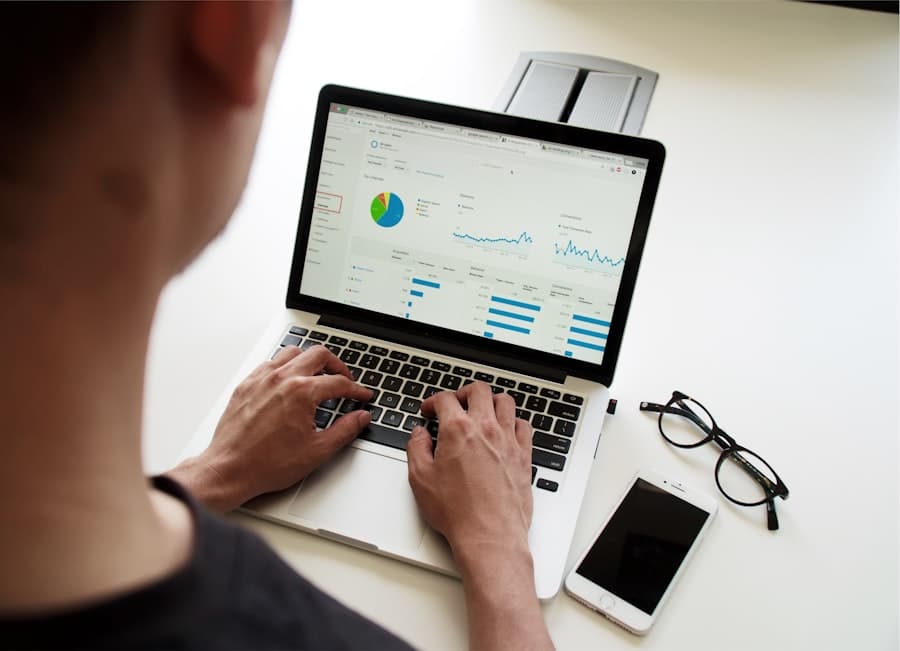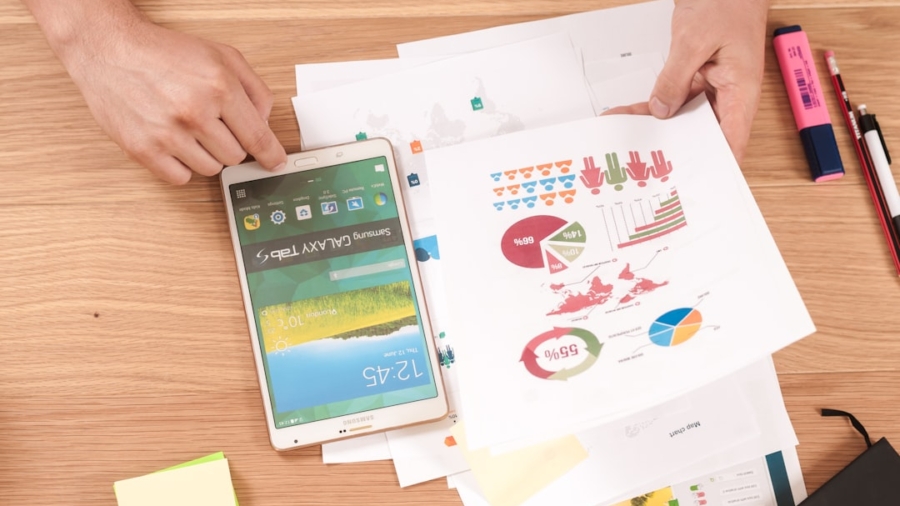The integration of artificial intelligence (AI) into workforce planning represents a transformative shift in how organizations manage their human resources. As businesses face an increasingly complex and dynamic environment, the need for sophisticated tools to analyze and predict workforce trends has never been more critical. AI technologies, with their ability to process vast amounts of data and identify patterns, are becoming indispensable in crafting effective workforce strategies.
This evolution is not merely about automating existing processes; it is about rethinking how organizations approach workforce management, from recruitment to retention and beyond. AI’s capabilities extend far beyond simple data analysis. By leveraging machine learning algorithms and predictive analytics, organizations can gain insights that were previously unattainable.
For instance, AI can analyze historical workforce data to forecast future staffing needs based on various factors such as market trends, seasonal demands, and employee turnover rates. This level of insight allows companies to make informed decisions that align their workforce with strategic business objectives, ultimately enhancing productivity and operational efficiency.
Key Takeaways
- AI is revolutionizing workforce planning by providing data-driven insights and predictions for future workforce needs.
- AI plays a crucial role in predicting workforce needs by analyzing historical data, market trends, and business goals to forecast staffing requirements.
- Utilizing AI for talent acquisition and retention involves using algorithms to identify and attract top talent, as well as predicting employee turnover and implementing strategies to improve retention.
- AI’s impact on scheduling and shift management includes optimizing schedules based on demand, employee preferences, and business objectives to improve efficiency and employee satisfaction.
- Leveraging AI for performance management and employee development involves using data analytics to assess performance, identify areas for improvement, and personalize development plans for employees.
The Role of AI in Predicting Workforce Needs
Accurate Forecasting with Advanced Algorithms
In contrast, AI employs advanced algorithms that can analyze a multitude of variables, including economic indicators, industry trends, and internal performance metrics, to generate precise forecasts. For instance, a retail company might use AI to analyze sales data from previous years alongside external factors such as economic conditions and consumer behavior trends. By doing so, the AI system can predict peak shopping periods and recommend optimal staffing levels to meet customer demand.
Continuous Learning and Adaptability
Moreover, AI can continuously learn from new data inputs, refining its predictions over time. This adaptability is crucial in today’s fast-paced business environment, where changes can occur rapidly. By utilizing AI for workforce forecasting, organizations can stay ahead of the curve, making proactive adjustments rather than reactive ones.
Enhancing Agility and Responsiveness
This shift from a reactive to a proactive approach in workforce planning can significantly enhance an organization’s agility and responsiveness. By leveraging AI’s predictive capabilities, organizations can allocate resources more effectively, ensuring they are prepared for fluctuations in demand and staying ahead of the competition.
Utilizing AI for Talent Acquisition and Retention

In the realm of talent acquisition, AI is revolutionizing how organizations identify and attract potential candidates. Traditional recruitment processes often involve sifting through hundreds or thousands of resumes, a task that is not only time-consuming but also prone to human error and bias. AI-driven recruitment tools can streamline this process by using natural language processing (NLP) to analyze resumes and match candidates with job descriptions based on skills, experience, and cultural fit.
For instance, companies like Unilever have implemented AI-powered tools that assess candidates through video interviews analyzed by algorithms that evaluate verbal and non-verbal cues. This approach not only speeds up the hiring process but also helps eliminate unconscious bias by focusing on objective criteria rather than subjective impressions. As a result, organizations can build a more diverse talent pool while ensuring that they select candidates who are best suited for the roles.
Retention is another critical area where AI can make a significant impact. By analyzing employee engagement surveys, performance metrics, and turnover data, AI systems can identify patterns that indicate potential flight risks among employees. For example, if an organization notices a trend where employees in a particular department are leaving at higher rates than others, AI can help pinpoint the underlying issues—be it management style, workload, or lack of career advancement opportunities.
Armed with this information, HR teams can implement targeted interventions to improve employee satisfaction and retention.
AI’s Impact on Scheduling and Shift Management
Effective scheduling is essential for maintaining operational efficiency and employee satisfaction. However, creating schedules that meet both business needs and employee preferences can be a complex task. AI simplifies this process by analyzing various factors such as employee availability, skill sets, labor laws, and historical scheduling patterns to generate optimal shift schedules.
For example, in industries like hospitality or healthcare where staffing needs fluctuate significantly throughout the day or week, AI can dynamically adjust schedules based on real-time data. If a restaurant experiences an unexpected surge in customers during lunch hours, an AI system can recommend adjustments to staff schedules to ensure adequate coverage without overstaffing during quieter periods. This flexibility not only enhances customer service but also improves employee morale by accommodating their preferences whenever possible.
Moreover, AI can facilitate better communication regarding scheduling changes. Automated notifications can be sent to employees about shift changes or upcoming schedules, reducing confusion and ensuring everyone is informed in real-time. This level of transparency fosters a more collaborative work environment where employees feel valued and engaged.
Leveraging AI for Performance Management and Employee Development
Performance management is another area where AI is making significant strides. Traditional performance reviews often rely on subjective assessments that may not accurately reflect an employee’s contributions or potential. AI-driven performance management systems utilize data analytics to provide a more objective view of employee performance by tracking key performance indicators (KPIs) over time.
For instance, an organization might implement an AI tool that continuously monitors sales figures for individual sales representatives alongside customer feedback scores. By aggregating this data, the system can provide insights into each employee’s strengths and areas for improvement. This objective analysis allows managers to have more meaningful conversations with employees about their performance and development needs.
Furthermore, AI can play a crucial role in personalized employee development plans. By analyzing an employee’s skills, career aspirations, and performance data, AI systems can recommend tailored training programs or mentorship opportunities that align with both the individual’s goals and the organization’s needs. This personalized approach not only enhances employee engagement but also fosters a culture of continuous learning within the organization.
The Benefits of AI in Managing Workforce Diversity and Inclusion

Unbiased Hiring Processes
AI algorithms can analyze job descriptions for language that may inadvertently discourage certain groups from applying, such as gendered language or jargon that may alienate underrepresented candidates.
Data-Driven Insights for Inclusive Workplaces
Additionally, AI can assist in monitoring diversity metrics within the workforce. By analyzing demographic data alongside performance outcomes, organizations can identify disparities in promotions or pay among different groups. This data-driven approach enables HR teams to implement targeted initiatives aimed at fostering a more inclusive workplace culture.
Enhancing Employee Engagement and Innovation
Moreover, AI tools can facilitate employee resource groups (ERGs) by providing insights into employee engagement levels among diverse groups. By understanding how different demographics experience the workplace environment, organizations can tailor their diversity initiatives more effectively. This proactive approach not only enhances employee satisfaction but also drives innovation by leveraging diverse perspectives.
Overcoming Challenges and Ethical Considerations in AI Workforce Planning
Despite the numerous benefits of integrating AI into workforce planning, several challenges and ethical considerations must be addressed. One significant concern is the potential for bias in AI algorithms. If the data used to train these systems reflects historical biases—such as underrepresentation of certain groups—there is a risk that the AI will perpetuate these biases in hiring or promotion decisions.
To mitigate this risk, organizations must prioritize transparency in their AI systems by regularly auditing algorithms for fairness and accuracy. Implementing diverse teams in the development process can also help ensure that multiple perspectives are considered when designing AI tools. Additionally, organizations should establish clear guidelines for ethical AI use that prioritize fairness and accountability.
Another challenge lies in the potential resistance from employees who may fear job displacement due to automation.
By emphasizing the role of AI as a tool for enhancing productivity and supporting decision-making processes, organizations can foster a culture of collaboration between humans and machines.
The Future of AI in Workforce Planning and Potential Developments
Looking ahead, the future of AI in workforce planning holds immense potential for further advancements that could reshape how organizations operate. As technology continues to evolve, we may see even more sophisticated predictive analytics capabilities that allow organizations to anticipate workforce needs with unprecedented accuracy. Moreover, advancements in natural language processing could lead to more intuitive interfaces for HR professionals when interacting with AI systems.
Imagine a scenario where HR managers can simply ask questions about workforce trends or employee performance in natural language and receive instant insights powered by AI analytics. Additionally, as remote work becomes increasingly prevalent, AI could play a pivotal role in managing distributed teams effectively. Tools that analyze remote work patterns could help organizations understand how to optimize collaboration across different time zones while maintaining employee engagement.
In conclusion, the integration of AI into workforce planning is not just a trend; it represents a fundamental shift in how organizations approach human resource management. As businesses continue to navigate an ever-changing landscape, leveraging AI will be essential for staying competitive and fostering a thriving workplace culture that values diversity, inclusion, and continuous development.
AI technology is revolutionizing workforce planning for companies, allowing them to optimize their resources and improve efficiency. This article discusses how AI is being used to analyze data and predict future workforce needs, ultimately helping businesses make more informed decisions. For more information on the latest advancements in technology, check out this article on how to choose the right iPhone for you in 2023.
FAQs
What is workforce planning?
Workforce planning is the process of strategically aligning an organization’s workforce with its business objectives. It involves analyzing current workforce capabilities, identifying future workforce needs, and developing strategies to meet those needs.
How is AI being used in workforce planning?
AI is being used in workforce planning to analyze large volumes of data, identify patterns and trends, and make predictions about future workforce needs. AI can also help in identifying skill gaps, optimizing workforce deployment, and improving decision-making processes.
What are the benefits of using AI in workforce planning?
Some of the benefits of using AI in workforce planning include improved accuracy in predicting future workforce needs, better alignment of workforce capabilities with business objectives, and more efficient allocation of resources. AI can also help in identifying opportunities for workforce optimization and cost savings.
Are there any challenges in using AI for workforce planning?
Some of the challenges in using AI for workforce planning include data privacy and security concerns, potential biases in AI algorithms, and the need for specialized skills to implement and manage AI systems. Additionally, there may be resistance to change from employees who are accustomed to traditional workforce planning methods.

